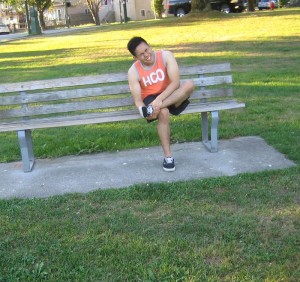A bunion is a bony bump that can be found on the joint at the base of the big toe and forms when the big toe pushes against the next toe, making the joint of the big toe bigger and starts to stick out. The skin that covers the bunion is red and sore.
Wearing tight and narrow shoes can make bunions worse. Bunions can develop as an inherited structural defect, stress caused on the foot or a condition such as arthritis. As for the small-sized bunions which are called bunionettes, they can also occur on the joints of the little toes.
Symptoms of bunions

- There is swelling, tenderness or reddening around the joint of the big toe.
- A bulging bump is seen on the exterior of the foundation of the big toe
- Sometimes, corn or calluses develops when the first and second toes are overlapping
- Limited movement of the big toe along with persistent or intermittent pain
- Seek medical help when there is persistent pain in the foot, limited movement of the big toe, a visible bump on the joint of the big toe and there is difficulty in finding a proper shoe because of the bunion.
Causes of bunion
- Injuries on the foot
- An inherited type of foot condition
- Deformities acquired at birth or congenital
Bunions can be caused by certain types of arthritis; usually inflammatory types such as rheumatoid arthritis as well as occupations that place extra stress on the foot or one that requires a pointed shoe to wear can also be the cause.
Some possible complications bunions can cause include the following:
- An abnormal bend that happens in the middle joint of a toe and it is the toe next to the big toe which causes pain and pressure which is also known as hammertoe.
- A painful condition that happens when the small fluid filled pads or the bursa that function in cushioning bones, tendons and muscles found near the joints are inflamed is known as bursitis.
- Metatarsalgia which is a condition that causes pain and inflammation in the ball of the foot.
Treatment and home remedies of bunions
- Apply an ice pack at least two to three times on a daily basis in order to help minimize swelling if a bunion becomes painful and inflamed.
- Apply a non-medicated bunion pad to the bony bump.
- Wear comfortable shoes can help prevent bunions. Wear shoes that have enough space for the toes. Take note that the toes should be able to wiggle and move vertically and horizontally. When inside the house, wear socks or slippers.
- Soak the foot in a bucket of ice since this helps minimize inflammation and swelling of the big toe.
- Place an ice pack over the toe or utilize heating pads to help relax the joints.
- Rub turmeric on the joint of the toe and cover it with gauze or take turmeric capsule. Turmeric helps in minimizing inflammation and possesses natural pain killing properties as well as helps strengthen the toes.
